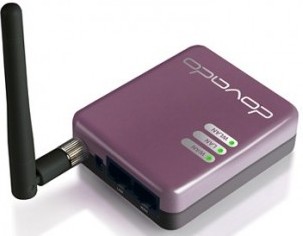  DOVADO, the supplier of mobile broadband routers and software, on Wednesday introduced Bridge Mode, a firmware upgrade that disables NAT routing, allowing existing network and security infrastructure to connect to a 4G/LTE or high speed 3G network.
Specifically targeted at the corporate market, the new development adds to the high data-capacity and low latency of 4G/LTE, providing an Ethernet-like experience making it suitable for enterprise connectivity for remote offices or fallback connectivity.
Prior to the introduction of Bridge Mode, mobile broadband did not offer corporates a viable option due to the limitations imposed by NAT (Network Address Translation) routing. In short, NAT routing is a process of converting a single public IP address (handed out by the operator) into many local private IP addresses within a home or office environment.
Introducing a second layer of NAT on top of an existing company firewall can cause headaches for companies when connecting over mobile broadband networks. Normally, when a 4G router substitutes a Fiber or ADSL connection, it operates only in routed mode imposing that undesired second layer of NAT causing communication problems for many business-critical applications such as inbound VPN, Extranet access and e-mail, amongst others. As a result, mobile broadband hasn''t been a viable option till now.
DOVADO solves this issue by converting its routers into a bridge, enabling the device to serve as a transparent converter between the USB modem and its Ethernet LAN port, disabling NAT-routing as a result. The single public IP address provided by the 4G or 3G network is channeled straight through the DOVADO router and directly hits the company's existing firewall. As a result, 4G/LTE or high speed 3G provides a viable substitute for fiber as it not only offers high speed downlink and uplink but also low round-trip latency, similar to public Ethernet. This means that the company website can be accessed faster and data can be rapidly downloaded.
"Ask any company and they will tell you that they would prefer to have a fast Fiber Ethernet connection to their IT infrastructure. If this is not available, mobile broadband technology in the form of 4G/LTE comfortably fulfills their heavy uplink and downlink speed requirements, however the limitations of NAT routing have, to date, made it a less than optimal solution," said Mathias Johansson, CTO of DOVADO. "DOVADO's Bridge Mode provides a solution that overcomes these barriers between an existing company firewall and the Internet, opening up a whole wealth of opportunities for mobile operators who can now offer their corporate customers the same services and capabilities using 4G, as they have done so far on Fiber Ethernet."
DOVADO has added Bridge Mode support to over 20 different USB modems, half of which are 4G/LTE, and the rest being 3G operating at 42 and 21Mbps. The DOVADO router portfolio, including its best-seller the DOVADO TINY, specifically caters for mobile broadband subscribers worldwide. The routers support a wide range of different USB modems for 4G, 3G and 2G technologies ranging from LTE down to GPRS. |